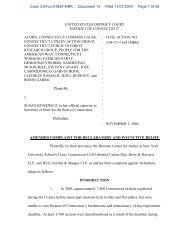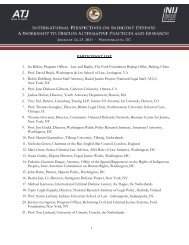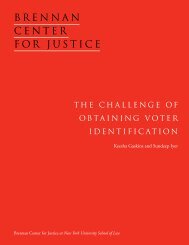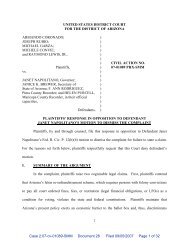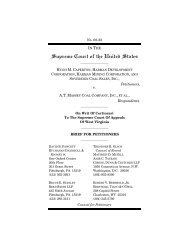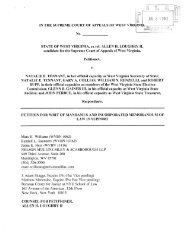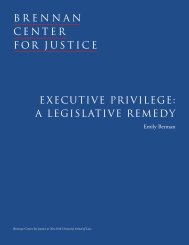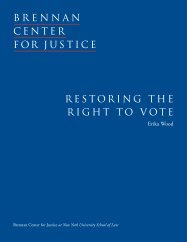THE NEW YORK STATE LEGISLATIVE PROCESS: AN ...
THE NEW YORK STATE LEGISLATIVE PROCESS: AN ...
THE NEW YORK STATE LEGISLATIVE PROCESS: AN ...
You also want an ePaper? Increase the reach of your titles
YUMPU automatically turns print PDFs into web optimized ePapers that Google loves.
the people of New York State by acquiescing in the passage of legislation which<br />
they have neither developed, debated, amended, or in some cases, even read.<br />
Legislators cannot make clear to their constituents the extremely limited roles<br />
they are allowed to play in Albany without undermining their own political interests<br />
in touting their legislative achievements. These incentives preclude the type<br />
of honest dialogue with voters that could lead to systemic reforms. As a result,<br />
most voters do not obtain sufficiently accurate information about either their own<br />
representative’s actions or the legislative process to hold the legislators in their districts<br />
properly accountable for either on Election Day. The current system thus<br />
deprives the voters of the public accountability promised by a popularly elected<br />
legislature.<br />
■ INEFFICIENCY<br />
<strong>THE</strong> IMPACT OF <strong>NEW</strong> <strong>YORK</strong>’S DYSFUNCTIONAL <strong>LEGISLATIVE</strong> <strong>PROCESS</strong> 51<br />
At least one student of Albany’s legislative process has suggested that New York’s<br />
centralized legislative process efficiently handles legislation by organizing legislators’<br />
diverse interests and placing responsibility for a bill’s passage in fewer<br />
hands. 267 If such efficient results could be demonstrated – which they have not<br />
been to date – such evidence could conceivably outweigh the negative impact of<br />
the current process on the quality of legislation and its lack of public accessibility<br />
and accountability.<br />
From the data analyzed in this report, however, it appears that Albany’s current<br />
system is profoundly inefficient in any event. First, New York’s system encourages<br />
legislators to introduce more bills than in any other state legislature. When combined<br />
with the Legislature’s extremely low rate of enactment, this suggests a misallocation<br />
of resources – from both staff and legislators themselves – to developing,<br />
drafting, and advocating for legislation that will never even reach the floor<br />
much less become law.<br />
Second, examples of bills that have enjoyed majority support but nevertheless<br />
failed to reach a floor vote argue that New York’s current process is ineffective in<br />
identifying and prioritizing those bills that should receive the full attention and<br />
resources of a chamber. Many legislatures and Congress rely upon the momentum<br />
and support for a bill developed by a committee’s work and public advocacy<br />
by its supporters to demonstrate that it deserves to reach the floor and absorb<br />
extensive staff and legislators’ time and energies. By contrast, New York’s<br />
Legislature must rely upon two individuals – the Speaker and the Majority<br />
Leader – to determine whether a bill should receive their individual attention to<br />
negotiate a final version with the governor and with each other and whether the<br />
full chamber should vote on it. Placing such a burden to develop, negotiate, and<br />
effectively pass all major legislation on two individuals inevitably, and through no<br />
fault of their own, produces unnecessary delays and inefficient allocations of<br />
resources.<br />
This inefficient use of resources may help to explain why New York’s Legislature



